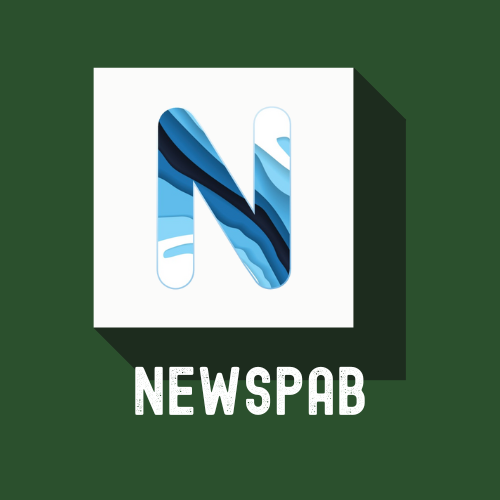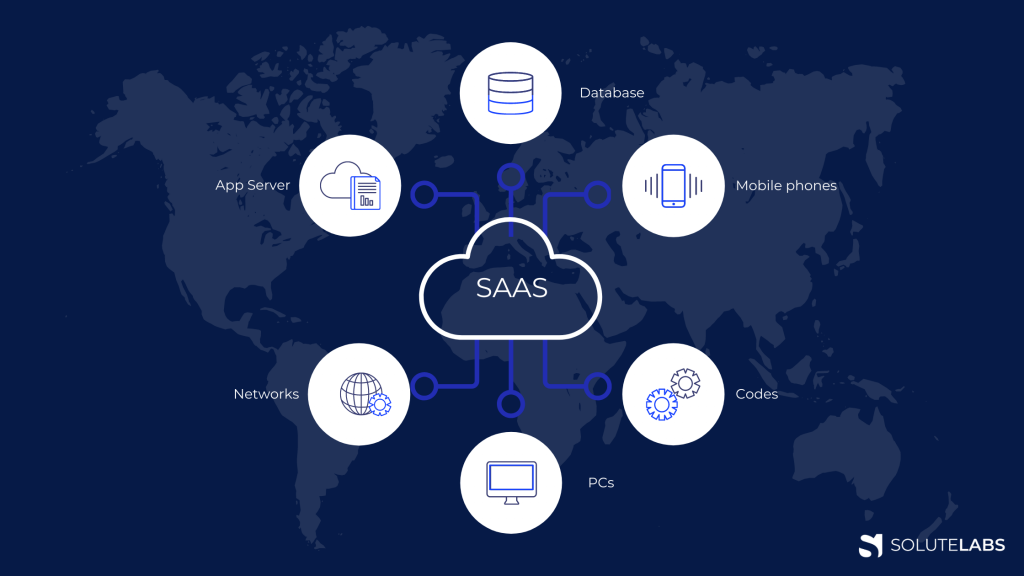Last Updated on April 15, 2024 by Nadeem Ahmad
SaaS is a rapidly growing IT sector that boosts other public cloud services such as PaaS, IaaS, and BPaaS. Software as a service has a high adoption rate because, according to statistics in 2020, the user spending on SaaS or cloud application services reached up to $102,798. It grew to $122,633 by the end of 2021. There is a significant rise in the adoption of cloud application services because of scalability, cost-effectiveness, and flexibility benefits. SaaS apps are the primary reason organizations want to accelerate digital growth and transformation, especially after the pandemic. SaaS app development is a lifecycle approach that characterizes the capabilities and scope of this platform. But before we get into the basics of SaaS app development, let us first study SaaS apps in detail.
What is a SaaS App?
It is a cloud-based product that allows users to connect and collaborate with different cloud apps over the internet with utmost ease and flexibility. SaaS is a mechanism or methodology that delivers applications directly over the internet. It relaxes users from the strenuous task of software and hardware management and no longer depends on the installation and maintenance of software with SaaS apps.
SaaS Software Development
SaaS app development focuses on the following two lifecycle approaches:
- Capabilities
- Operational scope of the platform
It is well-established that SaaS is a cloud-based application and sharing service that facilitates, develops, and maintains cloud applications through a cloud solution provider. Internet users or businesses can easily access these services over the internet with the help of a pay-as-you-go pricing strategy. The cloud providers also ensure smooth access to all the relevant automatic software updates along with adequate management of hardware, middleware, security, and application as needed. It offers solutions and services for businesses of all types and sizes.
Crucial stages of the SaaS app development lifecycle
Envisioning
In the first stage of SaaS app development, the project vision and scope are decided and defined, keeping in view the business benefit. This step involves activities including:
- Creating and validating the app idea
- Conducting thorough market research
- Identifying crucial business pain points and needs
- Establishing short and long-term business goals and plans
- Deciding terms and conditions with the potential investors and partners
- Evaluating cloud architectures
Major stakeholders in this stage are developers, product managers, investors, partners, cloud consultants, etc.
Evaluating
It is the most crucial and decisive stage of SaaS application development because it focuses on cloud capabilities and architecture. Also, the SaaS project becomes operational at this stage, and its framework and infrastructure are hard to alter or migrate to another cloud platform. Some essential considerations for searching for the right platform are:
- Requirements, technical architecture, and functionalities of the platform
- Security and data privacy assessment
- Platform’s performance capability, flexibility, scalability, reliability, and disaster recovery
- Your financial plan and monetization models
- Relevant management tools and support are available
Planning for Saas App
This stage involves all the activities and deliverables of the SaaS project. It also focuses on planning short- and long-term goals and objectives. Some steps of the planning phase are:
- Outlining the requirements
- Converting the requirements into technical specifications
- Finalizing the project goals, functional specifications, and team hierarchy
- Planning the schedule
- Finalizing the marketing and communication strategies
- Developing risk mitigation and assessment strategy
Subscribing
Subscribing stage highlights the subscription plans with the cloud provider. There are several checkpoints at this stage, such as architecture and pricing decisions, documentation, security compliance assessment, backup plans, etc.
Developing
At this stage, the business sets up the initial features of the SaaS app depending on its architecture. You can add new updates, changes, specifications, improvements, etc., at this point.
Operations
In the final stage of the SaaS lifecycle, the app is deployed and maintained after being tested. It involves these steps:
- Finalizing support, maintenance, and training plans
- Conducting load testing
- Development of the deployment plan
- Application Integration
- Performance monitoring and assessment
- Feedback collection
And this is how a SaaS product comes into existence after strenuous and laborious tasks of app development aiming to connect users and improve shareability.

